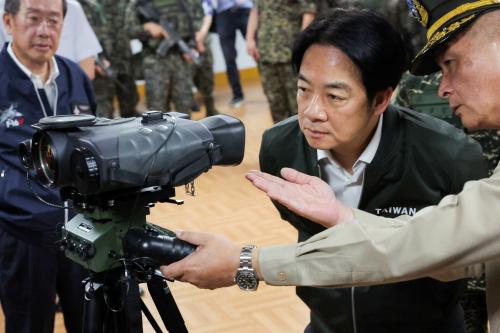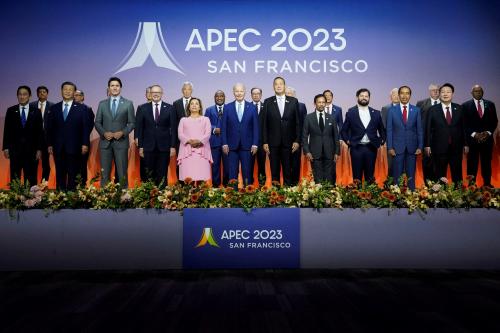1. Introduction. The movement towards the construction of an open free market economy in Russia during the mid-1980s also started the process of defining its role in the global and Pacific regional economic integration processes. These changes at the national level also marked the start of the Russian Far East’s desire to become a major economic actor in the Pacific. But, as the Russian Far East territories were dreaming of their new Pacific future, and struggling for political self-determination, what concrete steps did they have to take?
In starting along the road towards economic integration with the broader world, we have the clear example of the half-socialist, half-capitalist system of neighboring China, which began its liberalization process earlier than Russia and gained valuable experience. But we also have as a reference point the more sophisticated political economy of near- by Japan, with its own semi-socialist aspects, which had confronted many of Russia’s developmental problems much earlier still, and which had subsequently moved to a much higher standard of living.[1] In the light of these two contrasting, but instructive Asian paradigms, as well as Russia’s own past experience, it was rather easy to see abstractly what needed to be done. But what were the real chances for Russia and its Far East territories to really emulate foreign nations, or to enter the process of regional economic integration on an equitable basis, given their political-economic distance from the West and their distinctive socio-economic structure, forged over decades by Socialism and the Cold War? With whom and how should they integrate? Who is willing to receive them? On what terms?
No country willingly concedes its place to another in the world market; every country above all pursues its own interests. But Russia’s tragedy is that its interests are diverse and in transition. It is caught between two worlds: that of the pre-free-market reform, to which it is impossible to return, and that of the free market idea, which a large part of its society has not yet accepted.
2. Issues for the Russian Far East
For nearly three hundred years, ever since Peter the Great removed his capital from Moscow to Saint Petersburg, Russia has been decidedly Western in its orientation, with only limited concern for the Oriental matters that had weighed heavily on Russia earlier in its history. From 1930 until late 1980s, the Russian Far East was largely isolated from the outside world, apart from some limited contacts, particularly with Japan, through Khabarovsk and Nakhodka.
In the Russian transition towards an open market economy the most heated discussions surround predictions about the transformation tendencies in different parts of the federation, how various disintegration and integration processes are influencing the different regions’, as well as the whole country’s potential economic development. In particular, what does this mean for the Russian Far East?
First, since the Russian Far East has played the role of a natural resource supplier for the whole country, the collapse of many established production links resulted in a huge decline in its economy, which was oriented mainly towards mining and the first stage of processing of mineral, biological and forest resources.
Second, the main resource-related, as well as defense-sector enterprises in the Russian Far East are mostly based in cities, so the recent decline in output had given rise to acute social problems.
Third, the main primary and secondary sector Far East enterprises are labor and capital intensive. Their production efficiency mainly depends on the physical and age characteristics of the labor force. In earlier years, the formation of the labor force was centrally organized and planned. Because of the extreme natural conditions, much of the labor force worked intensively for limited periods, and this required well organized migration services. Since 1992, labor availability in the region has been less secure than formerly.
Fourth, in the main works of Russian specialists, disintegration problems are typically treated as problems of policy and legislation, and are mostly explained by subjective factors such as the separatist goals of local political elites. However, the analysis of such problems for separate regions gives a more concrete picture of the genuinely critical factors in each case.
The political and economic transformation of the Russian Far East has been following a spontaneous course. Of course, there is a role for the center, but it is largely limited to statements of general principles, including: declarations of national priorities in the economic and scientific-technical spheres for the whole country, as well as for its separate regions; statements about the different transformation models and their stages of development; support for new management structures promoting change; etc.
At the regional level itself, these conditions are not considered especially important. As a result, political apathy is increasing, production links with central parent enterprises are weakening. In such circumstances, the future of “provincial regions” is not determined, and their economic and political situation is extremely unstable. Without a strategy envisaging new modes of integration that gives regions a conception of themselves as valuable for overall national development, disintegration could even be transformed from a political slogan into economic reality.
At the same time, regions cannot simply “drop out” of the Russian domestic market without finding a new place for themselves. Thus each regions must identify a new integration area, in accordance with its absolute or comparative economic advantage. In this process, Russia should also recognize the unique value of its regions, not only as a source of strategic resources for national industry, but also in terms of their wider economic potential, providing the Russian state with significant competitive advantage on the world market.
3. Economic potential
The potential of the Russian Far East is derived from four key factors: 1. geographical location; 2. the presence of mineral, biological and forest resources, which are unique in the world in terms of their abundance and quality; 3. the availability of large areas of land with high ecological and recreational potential; 4. a well-qualified and mobile labor force, highly motivated for production activity. Each factor has its own value, but taken together they make the Far East Region unique in its capacity for autonomous development, financing, and forming a new economic mechanism. Consequently, the main goal of new economic strategy for the region should be to transform these potential sources of economic growth into real ones.
The geographical peculiarity of the Russian Far East is that it extends over 5 quite distinct landscape-geographical zones, namely: arctic deserts – 15% of the territory; polar tundra – 25%; forest tundra – 35%; forest – 20%; forest- steppe – 5%. The geographical location of the Russian Far East favors the growth of the heavy mechanical engineering sector, for instance in connection with possible railway projects to link America and Asia, and with routes to Central and South-East Asia. Also, projects are being considered to open up the region’s mineral and other natural resources. Most Far East natural resources are readily exportable, but the financial risks associated with their development greatly exceed those associated with investments in such developed countries as Japan, Canada, France and the UK.[2]
The population of the Russian Far East is about 8.5 million people, and the region has been characterized by labor scarcity. In the 1970s and 1980s, as a result of various centrally administered programmes to encourage migration, the population increased 2.4-fold. Despite a higher share of population of working age than Russia as a whole, and a higher unemployment rate (almost 7 % at the end of 1994), the Russian Far East has a shortage of labor in those labor intensive industries where the working conditions are most extreme, working conditions are most extreme, notably in mining and marine activities. The labor shortage in the mining industry is 18%, in fishing 16%.
There are disturbing changes in industrial structure, with the shares of mechanical engineering and processing industry falling by over a half. Large declines have occurred in the construction materials industry, with the output of cement down by 47%, brick production by 30%. In fishing, the leading export industry of the region, production is down by 18%.[3] Consumer prices in Russian Far East cities are the highest in Russia, and in 1994 42% of the population had incomes too low to achieve the accepted minimal consumption level achieved 42% at the end of 1994; this compares with an all-Russian average of just over 30%.
4. Development strategy
Today, most Russian regions are formulating their own economic development strategies on the basis of maximum independence in the determination of priorities and management of resources. In this process, the divergent interests of different political, economic and managerial agents, together with the relevant objective preconditions and constraints, influence the choice of strategy. In the Russian Far East territory we could observe conflicts of interest among the following groups: 1. the Russian Government and local authorities; 2. local entrepreneurs and large financial-industrial groups from Central Russia; 3. domestic and foreign investors.
Any viable strategy must conform to the interests of different groups of businessmen, employees, consumers and society as a whole. Businessmen and shareholders, domestic as well as foreign, are interested in higher profits; their employees – in higher wages and stable employment; the general population (consumers) – in stable or even declining prices; society (slate and local officials) – in increased tax revenue. For the state itself, foreign policy interests connected with national security, both militarily and in economic terms, also play a huge role. In the long term, the simultaneous achievement of all these objectives is very important, since each interest group possesses sufficient political and economic power to block any strategy that it does not accept.
The main interests of the Russian state in the Far East are the following: 1. To maintain its military power in the Pacific, in view of the location of strategic forces in the USA and the proximity of Japan. 2. For the region to serve as a vital transport-transit link both for export-import cargoes, and for coastal traffic to the Extreme North regions. 3. To retain and develop the enterprises for mining and manufacturing strategic resources such as metals, gold, diamonds, tin, uranium ore, as well as fisheries, forests and some others. Thus in formulating its economic development strategy for the whole country, the Government will try to maintain its control over the basic Far Eastern industries.
The interests of local political elites are mostly diametrically opposed to this. On the one hand, given the difficult situation on the consumer market, they try to secure additional subsidies and preferences from central government; on the other, they lobby for a legislative regime allowing them to control export quotas for strategic resources.
National and foreign businessmen are interested in promoting legislation also through different kinds of free economic zone) to provide the best possible access and operating conditions for natural resource industries, enterprises using or producing high technology items, and for the sectors with high capital returns on minimal initial investments. However, while they share some interests, national and foreign businessmen normally differ on such non-free market issues as local patriotism and their willingness to participate in certain social and ecological programmes or to invest in unprofitable infrastructure.
In finally selecting a socio-economic strategy of development for the Russian Far East, a number of approaches can be considered.
The first approach maintains the former system of labor distribution between territories. For management, this means retaining the previous “center-region” relationships, with an orientation on federal programmes and centralized financial sources. Analysis shows that such a strategy could not sustain a competitive production system for the Russian Far East using internal (local) sources for most investments. The emphasis on federal investments would make it impossible for the region’s basic industries to renew their capital, or modernize their technology in the next 3-5 years, and this would lead to the loss of their absolute and relative competitive advantage.
The second approach would entail the reorientation of production towards local markets and investments. In such a model “absolute autonomy” in resource distribution could be assured, making it especially attractive for local officials and businessmen.
This strategy could ensure better inter-industrial balance, notably for import substituting branches, by bringing about equilibrium in the regional market for goods and services. Also, at the regional level, equilibrium rates of industrial profitability could be established. However, the problem with this approach is that its local market orientation would actually result in reduced productive and investment activity and a more far-reaching “provincialization” of the Far East economy. This is because the Russian Far East territories have approximately the same economic structure (forest, mineral resources, fish). Such an industrial structure puts them in direct competition with each other, making real economic integration between the various Russian Far East territories practically impossible.
The third approach involves economic integration with the countries of North East Asia. Given the region’s special geographic location, it makes sense to concentrate efforts on the development of export-oriented industries which already play a part in the Asia-Pacific market. In that case, Russian Far East export-oriented enterprises, using a more developed system of sea transport facilities (both ships, ports, and associated infrastructure), could serve as an economic bridge between Russia and the Asia-Pacific Region, East and West. Initially, such a direction of development could be based around four major industries, namely defense-related production, mining, marine transport and fishing. Finally, this variant of a Russian Far East development strategy will depend on the role of the state in controlling the enterprises belonging to these key regional industries.
5. Conclusions and prospects
The ultimate goal of any reform is to improve people’s living standards eventually to levels comparable to the more developed industrial countries. The main way to achieve high rates of economic and social development is through the creation of a highly competitive, free market environment making the most effective use of the region’s absolute and relative economic advantages in both domestic and foreign markets. For the Russian Far East the main requirement for economic revival is to bring about an industrial structure able to sustain rates of export growth exceeding the growth rates of regional GDP and imports.
The export-orientation of the Russian Far East economy leads to a number of ideas about the possible place and role of Russia in the Asia-Pacific market, taking account of the foreign policy and external economic interests of Russia as a whole, as well as the economic interests of the separate territories and the relevant foreign and domestic business groups. These ideas include: 1. Developing the Russian Far East territories economically, politically and technologically – as a key link, or bridge, between the economic and political affairs of Russia and other CIS countries and the countries of the Asia- Pacific Region; 2. Forming in North East Asia a unique economic community, with integration of several different national cultures and economic systems; 3. Forming, together with the countries of North East Asia, the world’s largest marine economy sector.
Although the international ties of the Russian Far East were gradually deepening in the late 1980s, it has been the sharp economic changes since the beginning of 1992 that have given real substance to the notion of “Pacific Russia.” This might be defined as a maritime Russia, centering on the Prymorsky Region of the Russian Far East, with substantial and deepening economic interdependence with the Pacific Basin. Implicit in this concept is the notion that “Pacific Russia’s” emerging international economic ties involve not simply border trade with neighboring China and Korea, but rather a much broader pattern of interaction with other major Pacific powers, such as Japan and the United States, as well.
The birth of Pacific Russia has been sharply accelerated by a combination of Russia-specific and international factors. On the domestic side, stagnation in the Russian domestic economy, the rapid decline in defense spending, and the liberalization of the domestic price structure have all sharply reduced market opportunities for Russian Far East enterprises in the rest of Russia. With the relative prices of transportation and telecommunications services soaring, Moscow is suddenly many times as remote from Vladivostok, economically speaking, as it was even in 1992.
On the international side, Beijing, Seoul, Tokyo, and Washington, or more accurately Harbin, Pusan. Niigata, and Anchorage – regional centers of the North Pacific, with which Pacific Russia can easily have flexible non-politicized interaction – are rapidly becoming closer. During 1993 new air routes were opened up between Vladivostok and Anchorage, Alaska; San Francisco, California; and Niigata, Japan. During the first half of 1994 alone, that list was expanded to include Seoul, while the first direct flight between Hakodate, Japan, and Yuzhno-Sakhalinsk was also opened. Air travel between Pacific Russia and China has also been expanding, while border trade has simply exploded. Several new international sea routes, such as that between Vladivostok and Pusan, South Korea, have also been opened. Proposals are even now being made for a tunnel (it would be the longest in the world) connecting Japan’s northern-most island of Hokkaido with Sakhalin Island.
Endnotes
1. On Russo-Japanese developmental comparisons, see Cyril Black, Marius Jansen, Gilbert Rozman et. al., The Modernization of Japan and Russia, New York: Free Press,1975; and Japanese Economic Planning Agency (1993), Suggestions for Economic Reform in Russia, Tokyo: Study Group for Russian Economic Reform, May.
2. The financial risk coefficients associated with developments in the Russian Far East are estimated as: 80-85% for Prymorsky Krai, 75-80% – for Khabarovsky Krai, 70-75% – in Magadansky oblast and 90% – for Sakhalin. See report by the Head of Prymorsky Krai Administration “External economic links of Prymorsky Krai: problems and perspectives”, Vladivostok, January, 1994.
3. “The Role of the Russian Far East in the geostrategical and economic interests of Russia,” Report of the Head of the Prymorsky Krai Administration. Vladivostok, 1994.



Commentary
Round Table on Russia as an Economic Power in the Pacific
January 1, 1995